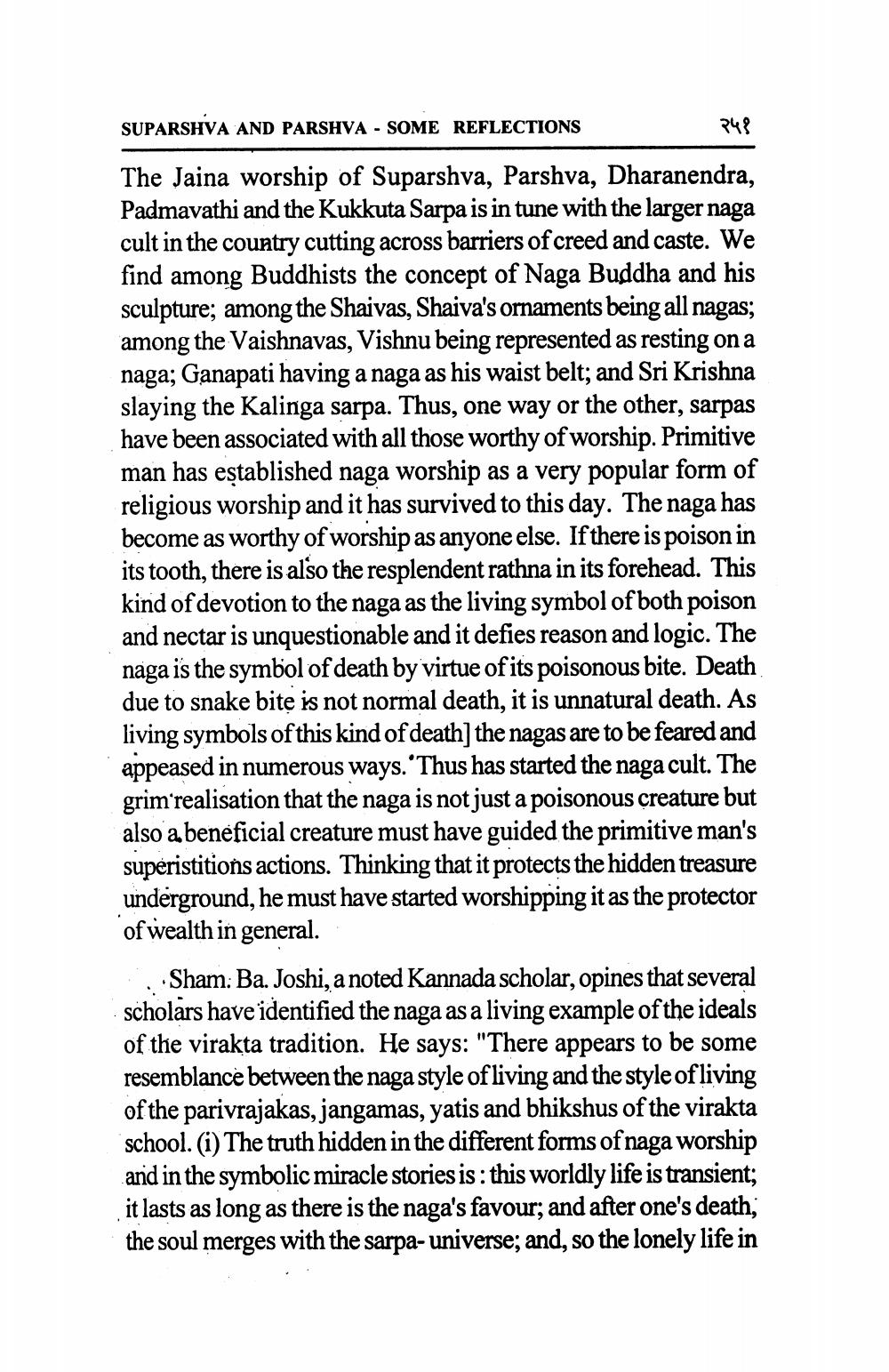________________
SUPARSHVA AND PARSHVA - SOME REFLECTIONS
२५१
The Jaina worship of Suparshva, Parshva, Dharanendra, Padmavathi and the Kukkuta Sarpa is in tune with the larger naga cult in the country cutting across barriers of creed and caste. We find among Buddhists the concept of Naga Buddha and his sculpture; among the Shaivas, Shaiva's ornaments being all nagas; among the Vaishnavas, Vishnu being represented as resting on a naga; Ganapati having a naga as his waist belt; and Sri Krishna slaying the Kalinga sarpa. Thus, one way or the other, sarpas have been associated with all those worthy of worship. Primitive man has established naga worship as a very popular form of religious worship and it has survived to this day. The naga has become as worthy of worship as anyone else. If there is poison in its tooth, there is also the resplendent rathna in its forehead. This kind of devotion to the naga as the living symbol of both poison and nectar is unquestionable and it defies reason and logic. The naga is the symbol of death by virtue of its poisonous bite. Death due to snake bite is not normal death, it is unnatural death. As living symbols of this kind of death] the nagas are to be feared and appeased in numerous ways. Thus has started the naga cult. The grim'realisation that the naga is not just a poisonous creature but also a beneficial creature must have guided the primitive man's superistitions actions. Thinking that it protects the hidden treasure underground, he must have started worshipping it as the protector of wealth in general.
Sham: Ba. Joshi, a noted Kannada scholar, opines that several scholars have identified the naga as a living example of the ideals of the virakta tradition. He says: "There appears to be some resemblance between the naga style of living and the style of living of the parivrajakas, jangamas, yatis and bhikshus of the virakta school. (i) The truth hidden in the different forms of naga worship and in the symbolic miracle stories is: this worldly life is transient; it lasts as long as there is the naga's favour; and after one's death, the soul merges with the sarpa- universe; and, so the lonely life in




